Detailed introduction of University of La Laguna:
Introduction and Overview
Location: Located in San Cristóbal de La Laguna, Tenerife, Canary Islands, Spain.
Student and Faculty Size: More than 25,000 students, academic and researchers, administrative staff and service staff.
History and Establishment
Its history dates back to 1701, when the Augustinians established a higher education center in San Cristóbal de La Laguna.
In 1792, King Charles IV of Spain signed a decree ordering the creation of the first literary university in the Canary Islands in San Cristóbal de La Laguna, the capital of Tenerife, but it was not built due to the political situation at the time.
In 1816, King Fernando VII of Spain issued a new royal decree to establish the University of San Fernando in San Cristóbal de La Laguna, and it officially opened on January 12, 1817.
1927 In 1989, the University of La Laguna was officially established according to a decree that divided the Canary Islands into two provinces.
In 1989, the school was reorganized.
School Strength
Teaching Quality: The curriculum is rich and diverse, focusing on the combination of theory and practice. Through internships, practical projects, etc., students can improve their professional skills and problem-solving abilities in actual operations, and the students trained can adapt well to the needs of society and the workplace.
Faculty: It has a high-quality faculty team. The teachers have rich experience and deep professional knowledge in teaching and scientific research, and can provide students with high-quality education and guidance.
Scientific Research Strength: The school has 13 university research institutes, and has carried out extensive and in-depth research in the fields of science, technology and art research. For example, the Institute of Astrophysics of the Canary Islands and the Institute of Tropical Diseases and Public Health of the University of the Canary Islands enjoy international reputations.
Institutional Nature
Public research university.
Educational Philosophy
Committed to promoting the development of education, science and culture, cultivating professionals with innovative spirit, critical thinking and social responsibility, contributing to the progress and development of society, emphasizing the popularization and fairness of education, and providing equal educational opportunities for students from different backgrounds.
Key Laboratories and Disciplines
Key Disciplines: Physics, mathematics, medicine, astronomy, biology, chemistry, pharmacy, economics, law, linguistics and other disciplines have high teaching and research levels. In the 2015 Shanghai Ranking, the school's School of Physics ranked 134th in the world, the School of Mathematics ranked between 401-500th in the world, and the School of Medicine ranked in the top 200 in the world.
Key laboratories: Canary Astrophysics Institute, Institute of Tropical Diseases and Public Health of the University of the Canary Islands, etc.
Department Settings
The University of La Laguna has 14 departments, including the Department of Physics, Department of Mathematics, Department of Biology, Department of Chemistry, Department of Pharmacy, Department of Economics and Business Science, Department of Law - Political and Social Sciences, Department of Philosophy, Department of Psychology, Department of Linguistics, Department of Geography and History, Department of Information Science, Department of Medicine and Department of Fine Arts, as well as 7 colleges, including the Higher School of Navigation, Machinery and Maritime Radioelectronics, Higher School of Civil and Industrial Engineering Technology, School of Nursing and Physiotherapy, Lacandelaria Nursing School, School of Business Research, Higher School of Agricultural Engineering Technology and Higher School of Information Engineering Technology.
Ranking
2015: Entered the top 500 in the world in the Shanghai Ranking It is a strong university and one of the two public universities in the Canary Islands that entered this ranking.
2016: It was ranked the second best university in the humanities in Spain by the Everis Foundation.
2018: It ranked 446th in the world and 13th in Spain in the CWUR ranking.
2019: In the US News & World Report ranking, the school ranked first in Spain in the field of space science and 53rd among the 250 universities analyzed.
2024: It ranked 802nd in the US NEWS World University Ranking, 1001st in the TIMES World University Ranking, and 701st in the ARWU World University Academic Ranking.
Expenses
Undergraduate tuition fees are about 800-1500 euros per academic year, and master's tuition fees are about 1000-2000 euros per academic year. The specific fees vary depending on the major.
Campus Environment
Campus Distribution: There are six campuses, namely Central Campus, Anchita Campus, Guajara Campus, South Campus, Ofra Campus and Santa Cruz de Tenerife Campus.
Campus Facilities: The campus is fully equipped with modern teaching buildings, libraries, laboratories, gymnasiums, student dormitories, restaurants, etc., providing students with good learning and living conditions.
-
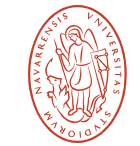
University of Navarra
-
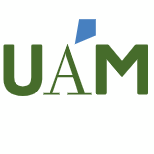
Autonomous University of Madrid
-

Polytechnic University of Catalonia
-

CEU University of San Pablo
-
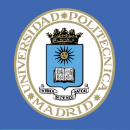
Technical University of Madrid
-

University of Lleida
-
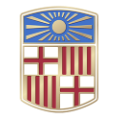
University of Barcelona
-

University of Oviedo
-
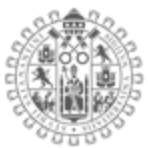
University of Salamanca
-
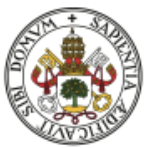
University of Valladolid
-

Mesoamerican University
-

Istmo University
-

Mariano Galvez University of Guatemala
-

Regional University of Guatemala
-

Galileo University
-

Francisco Marroquín University
-

Rafael Landívar University
-

University of the Valley of Guatemala
-

University of San Carlos of Guatemala
-

Technological Institute of Tlaxcala Plateau
-

Golfo University
-

Technological University of South Sonora
-

Technological University of Huejotzingo
-

Tizimín Institute of Technology
-

Chilpancingo Institute of Technology

